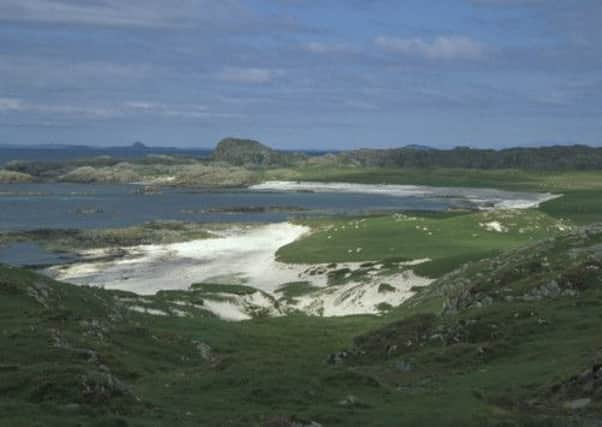Isle of Iona may be ancient burial site


This is the first geophysical investigation to be undertaken away from the core focus of the Columban monastic enclosure and the Benedictine Abbey.
The surveys were carried out on National Trust for Scotland land on the island by Dr Sue Ovenden and Alastair Wilson of Rose Geophysical Consultants.
Advertisement
Hide AdAdvertisement
Hide AdThe pair examined two areas in the fields to the south of the village - one close to the current village hall and south of the Nunnery and the other at Martyr’s Bay.
The area close to the village hall seems to show features of recent or natural origin which will be excavated later this year.
However, the more interesting result came from Martyr’s Bay where there is a mound beside the road where skeletal remains were excavated in the 1960s.
Excavations
Derek Alexander, the Trust’s Head of Archaeology Derek, said: “The geophysical survey shows that on the landward side, this mound may have been revetted by stones and surrounded by a shallow ditch. This could be a sign of burials.
“It has always been suggested that there are numerous burial sites on Iona and there have been various finds over the years, the most famous of which is in the graveyard at Relig Odhrain to the south of the Abbey.
“The burials that have been discovered so far are absolutely fascinating. For example, those unearthed by excavations at Martyr’s Bay in the 1960s were quite unusual - there were some 40 skeletons packed into an area about 4m long by 2m wide.
“These appeared quite jumbled and many may have been reburied, especially as the carbon dating showed that one skeleton dating from the 13 - 15th century was below one dating from the 6 – 8th century.
“It’s possible that this mound has some connection to another graveyard that’s marked on an old map, known as Clad Nan Druineach.
Advertisement
Hide AdAdvertisement
Hide Ad“We plan to investigate the area further in September, and hope that the findings will add more to what we already know about this fascinating island’s cultural and spiritual story.”
The findings are revealed as the island prepares for a special Service of Thanksgiving at Iona Abbey to mark the 1450th anniversary of Columba’s arrival on Iona.
Enhanced experience
The ecumenical service of thanksgiving on Sunday will be led by the Revd Joanna Anderson, Centres Director, the Iona Community, and representatives from Iona Parish Church, the Roman Catholic House of Prayer and the Scottish Episcopal Bishop’s House.
The preacher is the Very Revd Finlay Macdonald, chair of the Iona Cathedral Trustees.
The service will also feature contributions from Mull Gaelic Choir and the children of Iona Primary School.
It will be attended by senior church leaders from across Scotland and other VIPs and the family of Iona Community founder the late Rev George MacLeod.
To coincide with the anniversary, Historic Scotland is creating new interpretation and improved visitor facilities to enhance the visitor experience at the abbey.
The National Trust for Scotland works with local residents and groups on Iona, the Iona Community, Historic Scotland and Argyll and Bute Council to care for the island.